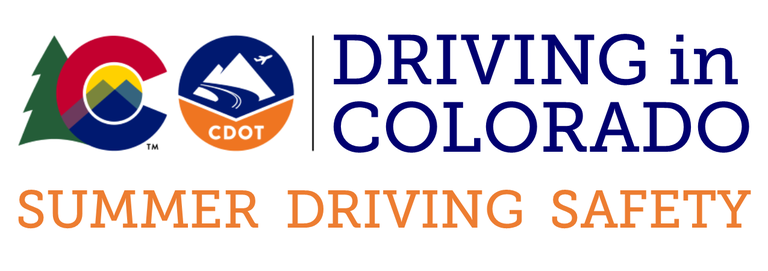
Be Prepared, Have a Plan
- Consider packing items to keep you or children occupied while waiting in the car. Activity books, colored pencils or a deck of cards can help pass the time. Find out if there are any construction projects on the roads where you may be driving.
- Construction can mean delays or closures. Be aware that some construction projects take place at night. Consider alternate routes if needed. Visit COtrip.org to see current projects.
- Know the weather forecast for the areas where you will be driving.
- If you are stuck waiting for a road to be cleared of mud or rocks, do not leave your car unless absolutely necessary.
- Never hang out in the median located between lanes. If traffic is moving in the opposite direction, the median can be a hazardous area! Emergency response agencies and heavy equipment may also need the median area to move about.
- Emergency highway closures can last for long periods of time. Supply your car with an emergency kit. The kit should contain at the very minimum: water, snacks, flashlight, and a blanket. Remember to also carry water for your pets if you’re traveling with animals.
Drive for Conditions
- Water and mud can contain unknown hazards hidden under the surface – rocks or other debris, like plant material and tree branches. Never drive through flooded areas, you do not know how deep or how fast the water is running.
- Even 8 to 10 inches of water can float an average-sized car, which can be easily swept off the road.
- Driving too fast on wet roads, hail covered roads or in flooded areas can cause a vehicle to hydroplane. Never use cruise control during rainy conditions with standing water on the roadway.
- Any amount of flooding or mud can obstruct the roadway and hinder drivers from knowing exactly where to drive. If you cannot see the roadway wait for the water to subside.
Leave Extra Room
- Leave extra room between your vehicle and others on the road at all times.
- Give pedestrians and bicyclists room when you see them on the side of the road.
- Move over safely when approaching first responders or law enforcement responding to emergency incidents on the side of the road.
- In inclement weather, even vehicles with four-wheel/all-wheel drive cannot stop any quicker on slick roads—but especially if you do not have adequate tires.
Check Your Tires
- Check the air pressure in all tires, including your spare.
- Ensure your vehicle has adequate tires with good tread. Worn tires can't grip the road well and can be extremely hazardous.
Give Your Vehicle a Safety Check
- Give your vehicle a tune-up before long trips.
- Check the oil level and oil filter. Get an oil change if necessary.
- Inspect the battery and check battery cables for proper connections or erosion.
- Inspect your brakes and pads.
- Make sure the wiper blades work properly.

